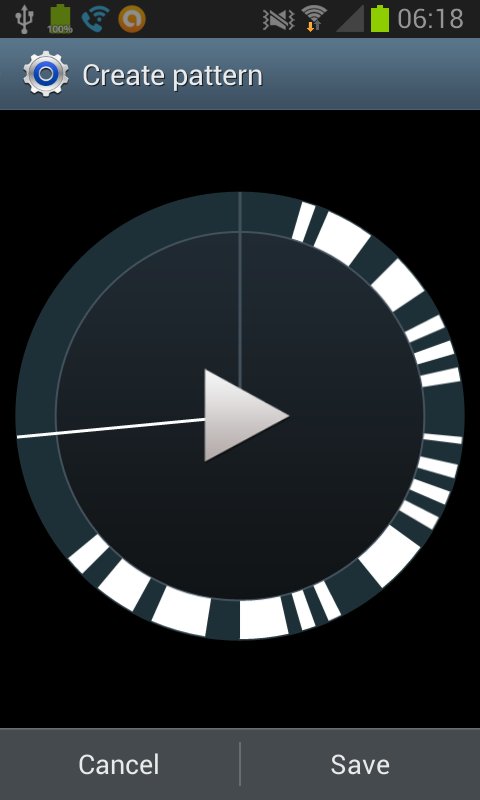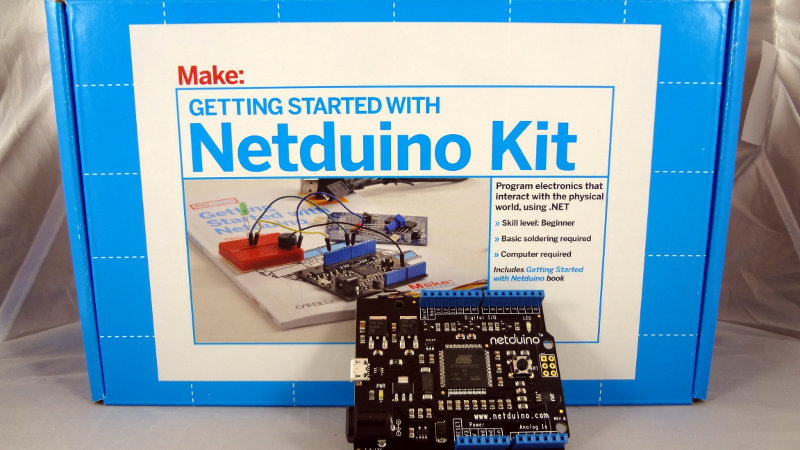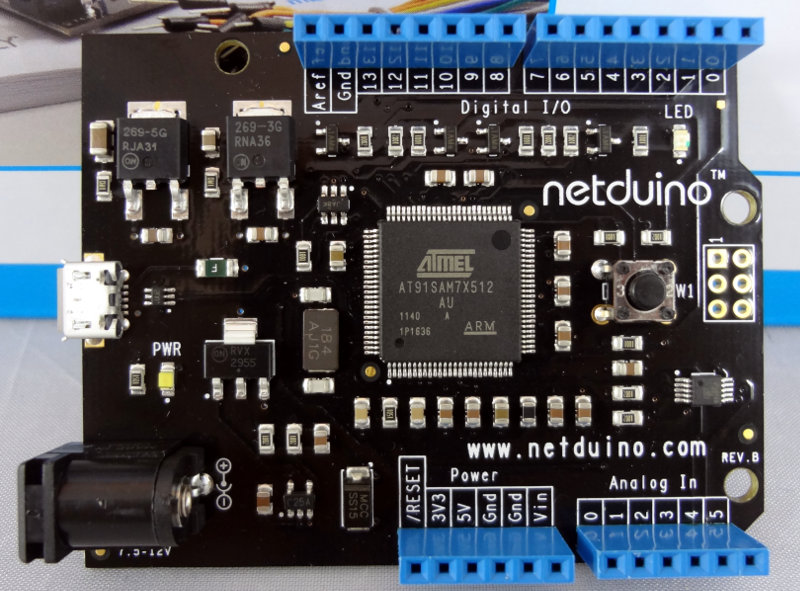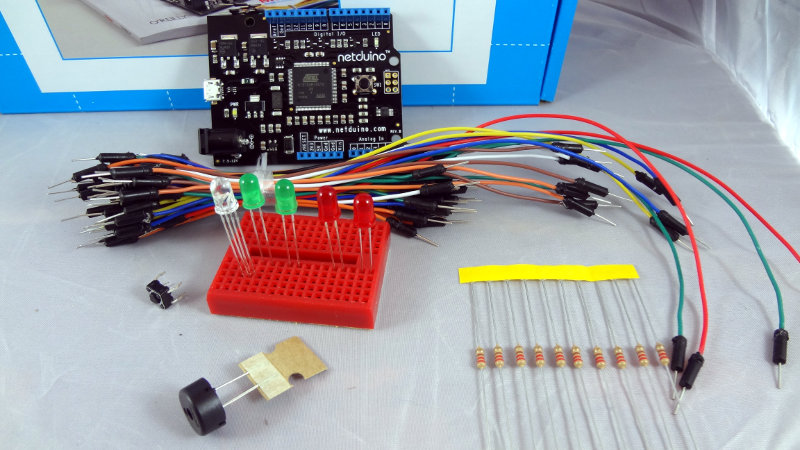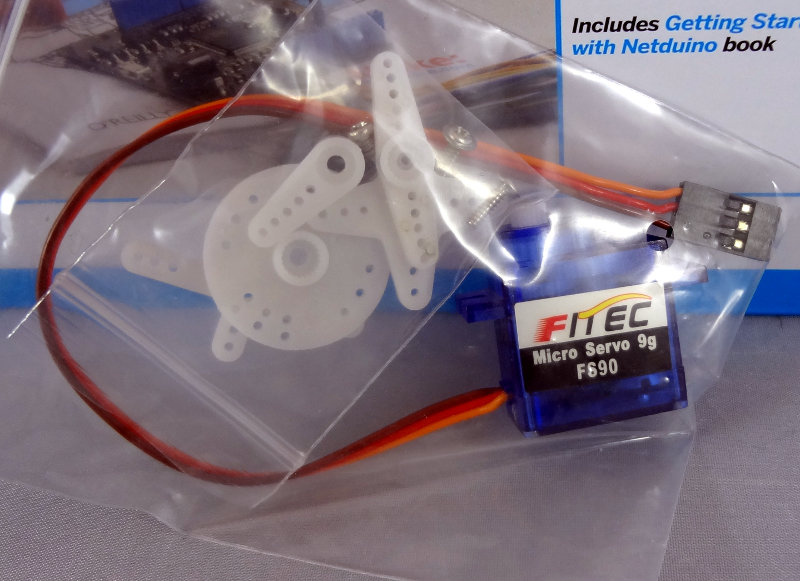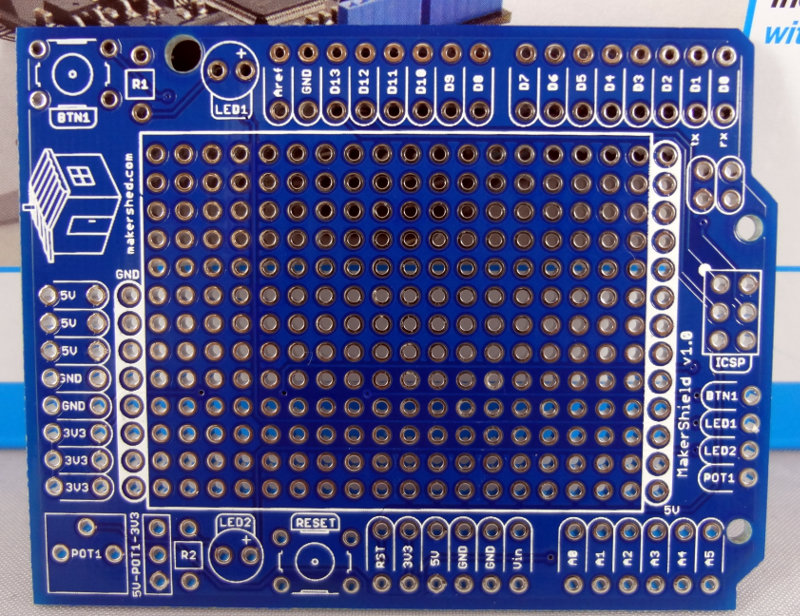The microcontroller programming equivalent of “Hello World” seems to be “Blink the LED”.
After going through some of the example code for my Netduino, I decided to expand a bit on the LED examples and come up with a simple little program that would make the onboard LED blink out Morse code.
After a few hours of futzing around trying to figure out the C# syntax and the relevant parts of the .NET Micro Framework, I finally came up with something that works pretty well. I called it MorseBlinker.
One of the problems I ran into was .NET Micro Framework API changes between 4.2 (which is what I had installed) and 4.1 which is what the examples in the Getting Started with Netduino book are written for. Also, apparently there’s a big difference between “a” and ‘a’ in C# (although I imagine it’s probably the same in C too).
The string is hard coded into the program, so if i want to change what the Netduino blinks, I have to change the string and redeploy the app, which isn’t too difficult. Timing is also hard coded too (in the dit variable which specifies the duration of a dit in milliseconds), so changing the speed it blinks at also requires the app to be rebuilt and redeployed.
using System;
using System.Threading;
using System.Collections;
using Microsoft.SPOT;
using Microsoft.SPOT.Hardware;
using SecretLabs.NETMF.Hardware;
using SecretLabs.NETMF.Hardware.Netduino;
namespace MorseBlinker
{
public class Program
{
private static void blinker(OutputPort p, string a)
{
// Make the LED blink a morse code string provided by a
// Change the duration of the blinking by adjusting the dit variable
int dit = 50; // dit length in milliseconds
int dah = dit * 3; // dah length in milliseconds
int space = dit * 7; // space length in milliseconds
foreach (char sym in a)
{
switch (sym)
{
case '.':
p.Write(true);
Thread.Sleep(dit);
p.Write(false);
Thread.Sleep(dit);
break;
case '-':
p.Write(true);
Thread.Sleep(dah);
p.Write(false);
Thread.Sleep(dit);
break;
case ' ':
p.Write(false);
Thread.Sleep(space);
break;
default:
break;
}
}
p.Write(false);
Thread.Sleep(dit * 3); // space between characters
}
public static void Main()
{
// Text to Morse code conversion table
Hashtable morse = new Hashtable();
morse.Add('a', ".-");
morse.Add('b', "-...");
morse.Add('c', "-.-.");
morse.Add('d', "-..");
morse.Add('e', ".");
morse.Add('f', "..-.");
morse.Add('g', "--.");
morse.Add('h', "....");
morse.Add('i', "..");
morse.Add('j', ".---");
morse.Add('k', "-.-");
morse.Add('l', ".-..");
morse.Add('m', "--");
morse.Add('n', "-.");
morse.Add('o', "---");
morse.Add('p', ".--.");
morse.Add('q', "--.-");
morse.Add('r', ".-.");
morse.Add('s', "...");
morse.Add('t', "-");
morse.Add('u', "..-");
morse.Add('v', "...-");
morse.Add('w', ".--");
morse.Add('x', "-..-");
morse.Add('y', "-.--");
morse.Add('z', "--..");
morse.Add('0', "-----");
morse.Add('1', ".----");
morse.Add('2', "..---");
morse.Add('3', "...--");
morse.Add('4', "....-");
morse.Add('5', ".....");
morse.Add('6', "-....");
morse.Add('7', "--...");
morse.Add('8', "---..");
morse.Add('9', "----.");
morse.Add(' ', " ");
morse.Add('.', "·-·-·-");
morse.Add(',', "--..--");
morse.Add('?', "..--..");
morse.Add('!', "-.-.--");
morse.Add('/', "-..-.");
// Text to play in Morse code. Change this to whatever you want
string morseText = "ab4ug";
OutputPort led = new OutputPort(Pins.ONBOARD_LED, false);
while (true) {
// go through all the characters in morseText
foreach (char c in morseText)
{
// Blink the character in Morse code
blinker(led, (string)morse[c.ToLower()]);
}
// Delay 1s before repeating the text
led.Write(false);
Thread.Sleep(1000);
}
}
}
}
You can check out the latest version over at Github.
For my next trick, I think I’ll try to make a speaker buzz at the same time as the light flashes.
